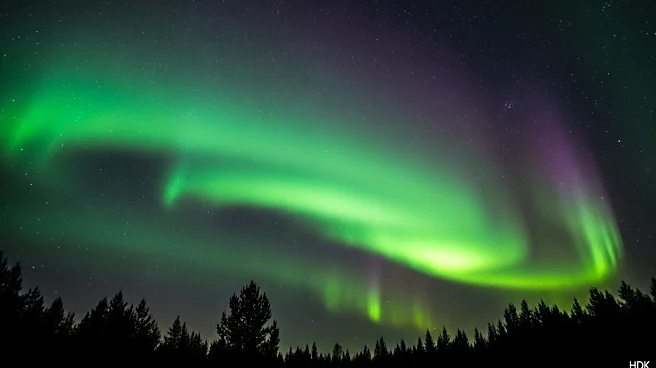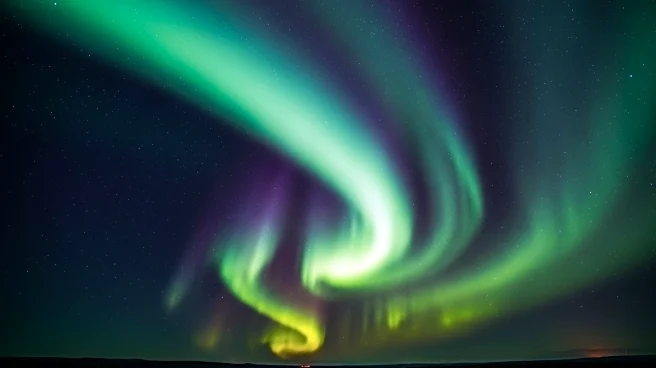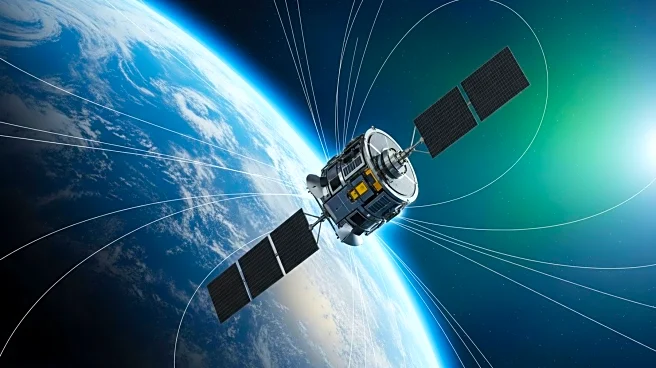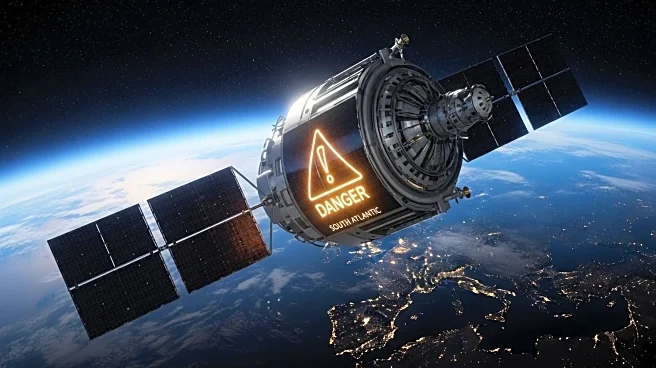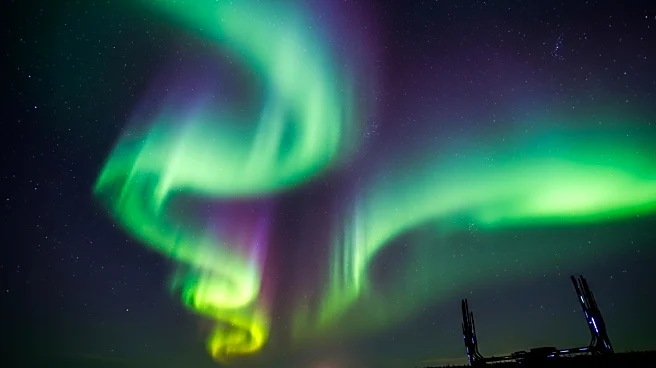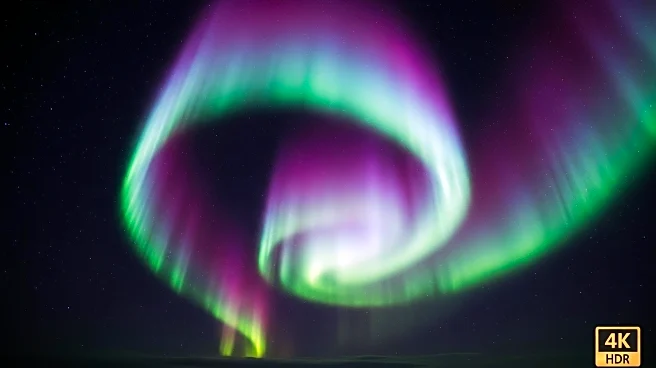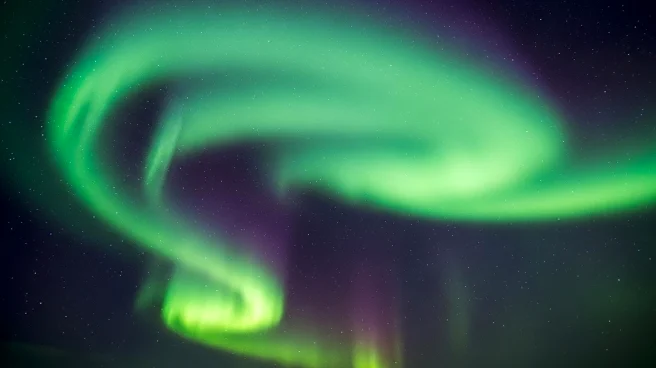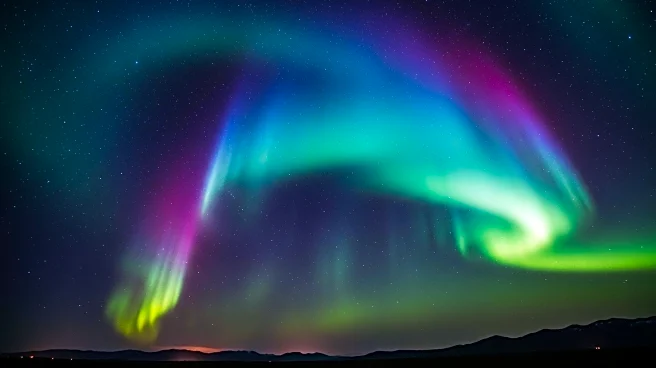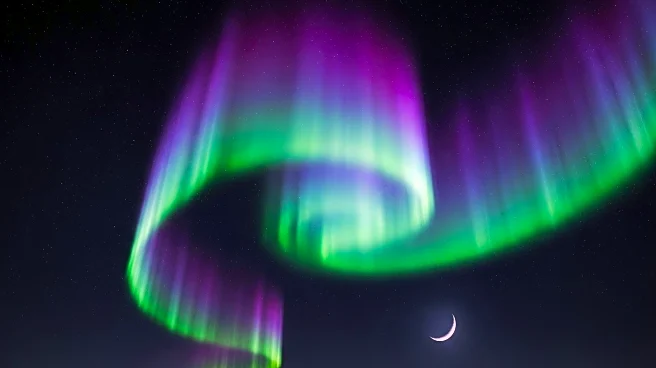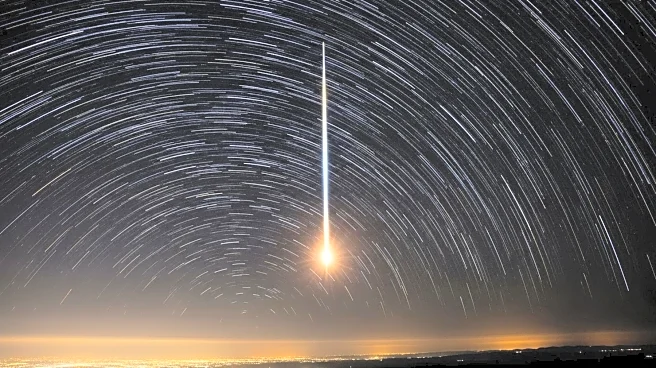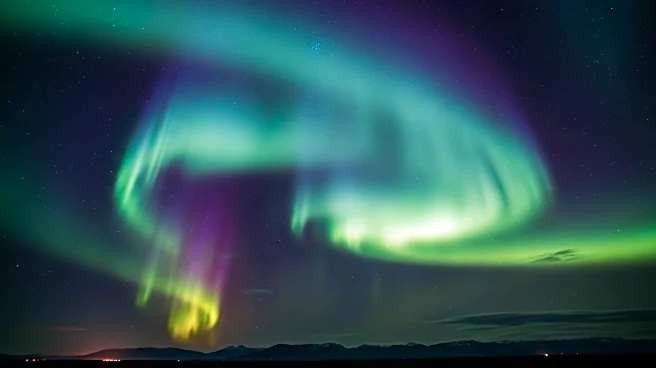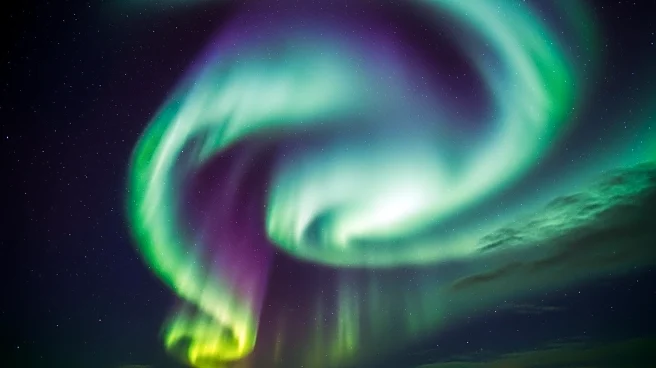What is the story about?
What's Happening?
In the coming years, the northern lights, or auroras, are expected to reach unprecedented levels of spectacle as the Sun enters a turbulent phase of its solar cycle. Scientists anticipate stronger geomagnetic storms and more vibrant auroral displays, even after the Sun has passed its peak activity period. This phenomenon is linked to solar cycles, which influence space weather and the auroras observed on Earth. The Sun's activity follows an 11-year cycle, marked by a solar maximum with peak sunspots and eruptions, followed by a solar minimum where activity slows. However, the years following the solar maximum can be exciting for aurora watchers due to the presence of long-lived coronal holes that release high-speed solar wind, sparking geomagnetic storms and stunning auroras.
Why It's Important?
The anticipated increase in auroral activity has significant implications for both enthusiasts and technological systems. While aurora chasers may enjoy extended displays, the heightened geomagnetic activity can disrupt communication systems, navigation tools, and spacecraft operations. Prolonged radiation and geomagnetic storms pose risks to astronauts and satellites, potentially damaging electronics and affecting space-based technology performance. Despite these challenges, the captivating auroral displays serve as a reminder of the powerful forces at work in our solar system, offering a unique opportunity for scientific study and public engagement with space phenomena.
What's Next?
As the Sun approaches its solar minimum, scientists expect the 'last gasp' of solar activity to occur within the next two to three years. This late-cycle activity, driven by complex sunspot groups, could lead to massive geomagnetic storms, causing auroras to appear in regions further south than usual. The last significant 'last gasp' event occurred in May 2024, when the Gannon Storm lit up skies as far south as Mexico. If a similar event occurs again, auroras could extend into mid-latitudes, providing an awe-inspiring spectacle for observers across the globe.
Beyond the Headlines
The increase in geomagnetic activity highlights the dual nature of solar storms, offering both breathtaking natural displays and potential technological disruptions. As society becomes increasingly reliant on satellite-based systems, understanding and mitigating the impacts of space weather becomes crucial. This period of heightened auroral activity presents an opportunity for advancements in space weather forecasting and the development of strategies to protect critical infrastructure from solar storm-induced anomalies.
AI Generated Content
Do you find this article useful?
